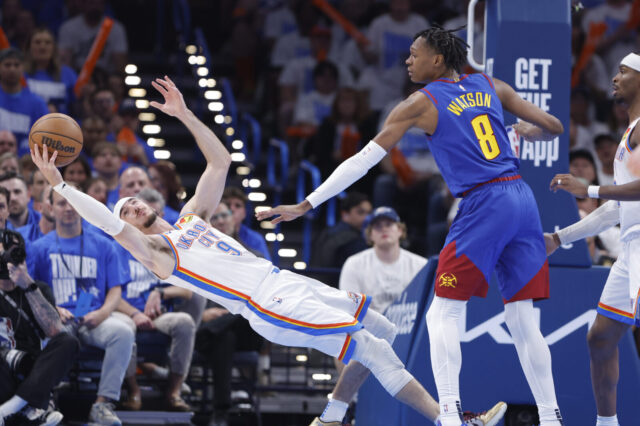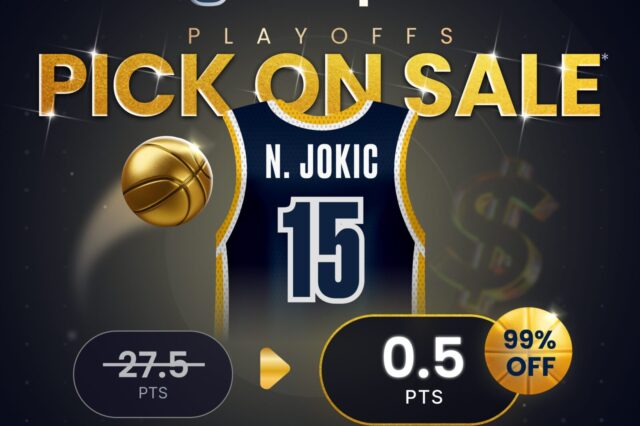August is upon us which means the NBA is in it’s dead period. For the most part rosters are entirely filled out, summer league is over and players are getting the last bit of rest, relaxation and offseason training in before the start of a new season. Still, basketball fans everywhere crave some hoops action (check out the WNBA) and analysis and we can’t expect Michael Porter Jr to invite random fans off the internet to his apartment every week. In the spirit of this, I’m dusting off a methodology for predicting what it would cost the Denver Nuggets (or any team for that matter) to trade for a star player. It’s been four years since we did this, so we’re going to have to update our data set. Back then the Los Angeles Lakers were sending out a potential star centers (Andrew Bynum hahahahahahaha) for Dwight Howard, today Howard’s getting dumped faster than your weekly recycling service. While the trades our model used back then still represent a star player trade, the value and what teams value has changed quite a bit. Additionally, I’m not naive enough to think my readers remember things I wrote about in the dead of the offseason four years ago, so let’s refresh everyone on the methodology and make a few tweaks to it as well.
This content is no longer available.
Methodology
Naturally, the difficult part of fake trades is finding one that is fair value, or at least accurate value, for the teams involved. Fans have a tendency to over value the players on the teams they root for, and while that’s also true of NBA GMs, fans being disconnected from actual trade negotiations can skew those bias’ even further in one direction. In order to eliminate this we try to do two things. First, we’ll use historical data to quantify what a “star” player is worth. Four years ago we used trades like Chris Paul to the Los Angeles Clippers, Carmelo Anthony to the New York Knicks and Dwight Howard to the Los Angeles Lakers. So again, the data set needs some updating. Second, we apply the same valuation method to Denver Nuggets players to figure out which combination of players are required to create appropriate value.
The system uses wins above replacement, or WAR, as the base measure of players value and then weights it based on how long the player has been in the league and their recent production and/or expected production. The trade value model uses two method’s to weight an individual player’s WAR at the time of the trade. First, cumulative WAR for players who have played less than four seasons in the NBA (essentially players on a rookie contract) is weighted by taking the mean of their actual and projected WAR from their second through sixth seasons. Projected WAR is taken from FiveThirtyEight.com’s CARMELO system The reason for this is young prospects are a major part of any star trade, but it’s their promise rather than their actual production that teams want. Additionally, the model discards a player’s WAR during their rookie season because many players, take Gary Harris for example, make little, or even negative, impact their first year. However, just because a young player doesn’t have a great rookie year it doesn’t mean he’s not a valuable trade piece in the eye of opposing teams.
This content is no longer available.
The second way the model weights cumulative WAR is for veteran players who have played a minimum of four seasons. These players all play on contracts they negotiated with an NBA team ergo, their value in the NBA has been determined by their production in the NBA, not their future promise (with some exception). To calculate these players cumulative WAR the model takes the average of their previous three seasons WAR at the time of the trade. The reason for taking only three seasons worth of data instead of five like the prospects is the mentality of trading for a veteran player in the NBA. A veteran player’s performance more than a few seasons ago is relatively pointless in terms of a trade. However, their performance from just the most recent season, while important, is not enough. Take Kawhi Leonard for example. His WAR last season was 0.5, which is abysmal, but obviously the Toronto Raptors didn’t trade for him based on his performance (or lack thereof) last season, though it certainly factored into their decision. Leonard’s weighted cumulative WAR in this trade model is 8.43, closer to the value of a number two star player than an MVP caliber player so his overall ability isn’t completely discarded, but the risk of his injury history is accounted for. Finally, the model doesn’t take into account draft picks involved in deals because a) their value is very difficult to quantify and b) in almost every case the draft compensation is the same: a future first round pick of some sort.
So what does the model say the cost for trading for a star player looks like in 2018? Luckily, there has been a rash of star player trades over the past two seasons. For the purpose of this exercise we’re going to use five trades as our baseline: Paul George to the Oklahoma City Thunder, Chris Paul to the Houston Rockets, Jimmy Butler to the Minnesota Timberwolves, DeMarcus Cousins to the New Orleans Pelicans and Kawhi Leonard to the Toronto Raptors.
This content is no longer available.
Dataset
| Player traded | WAR | Good prospect/NBA Starter | Solid prospect/NBA role player | NBA Veteran | Long shot prospect | Cumulative WAR | STV |
|---|---|---|---|---|---|---|---|
| Paul George* | 8.75 | Victor Oladipo | Domantas Sabonis | N/A | N/A | 4.94 | 1.77 |
| Chris Paul | 13 | Lou Williams | Montrezl Harrell | Patrick Beverly | Sam Dekker | 8.87 | 1.47 |
| Jimmy Butler | 10.26 | Lauri Markkanen | Zach Lavine | N/A | Kris Dunn | 3.18 | 3.23 |
| Demarcus Cousins | 8.57 | Buddy Hield | Tykreke Evans | N/A | Langston Galloway | 3.99 | 2.15 |
| Kawhi Leonard** | 12.16 | Demar Derozan | Jakob Poetl | N/A | N/A | 5.94 | 2.05 |
* Only the past two seasons of Paul George’s WAR were used
** Danny Green’s WAR included in total
We’re already starting to see some interesting revelations. First of all, adding Danny Green to the Kawhi trade makes sense from a value standpoint. With Kawhi’s injury dragging down his value, adding Green brings the overall player value back up to a range where it’s fairly in line with the other star trades. At the time of the PG13 trade it seemed like a really crummy deal for Indiana, but what people don’t realize is George’s last season in Indiana was by far his worst since his sophomore year (he won Most Improved Player after his 3rd season) and though Victor Oladipo had a lousy year in Oklahoma City, his last season in Orlando was actually pretty solid. In fact, I adjusted the model in the case of the George trade to use only his previous two seasons of WAR instead of three because otherwise the model would account for his lost season due to injury and would say the the Thunder actually got fleeced in the deal. We know that not to be the case. Same can be said of the Demarcus Cousins trade where it seemed like the Sacramento Kings went all KANGZ but they actually traded Boogie the season after his worst year on his new contract and Tyreke Evans actually had a decent year one season prior to that with the New Orleans Pelicans. Throw in the fact that the 1st rounder they got was a lottery pick in the immediately upcoming draft and the value on the Cousins trade doesn’t look that bad at all.
This content is no longer available.
The high and low values are somewhat revealing as well. The Los Angeles Clippers got the best package of anyone with the Chris Paul trade, not only in terms of cumulative value, but also in terms of relative value as well. There are likely some underlying reasons for this. First and foremost, the Houston Rockets needed to shed salary in order to make the deal feasible so including players like Lou Williams and Patrick Beverly was necessary even though they both were coming off solid seasons (Beverly was elected to first team All Defense and Williams finished third in 6th man of the year voting). On the opposite end, the Jimmy Butler trade is a puzzler. You can argue the Chicago Bulls lacked leverage, but so did the San Antonio Spurs in the Kawhi trade and so did the Indiana Pacers in the PG13 trade. You can also give the Bulls scouting department the benefit of the doubt and say they were really on to something with Lauri Markkanen but even using Markkanen’s weighted projected WAR based off of his rookie performance still doesn’t change the value equation much. Ultimately there’s no other way to slice it, the Bulls got poor return on trading their star player.
If you throw out the Butler trade as an outlier we end up with a range to settle on. Trading a star player by this method should return a Star Trade Value, or STV (patented, trademarked, all rights reserved to Zach Mikash, come bring your truck loads of money NBA Owners and GMs) somewhere within the range of 1.55 to 2.16 (one standard deviation from the mean). Obviously, this methodology isn’t perfect. There are so many variables, including the human element, that go into NBA trades and when a star is involved those variables get multiplied exponentially but at least this method provides a guideline. In mid-august, there’s really nothing much better to do than spin up some fake trades so why not put in some effort to make them as realistic as possible. In the spirit of that, now that we’ve spent over 1500 words walking through this process, I’ll put it to use over the next month, picking different star players that would make sense for the Denver Nuggets to acquire and seeing what type of package they would have to come up with given this method. The only question now is who to start with, hmmm….


